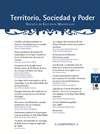Resumen
Resumen: En este trabajo se pretende mostrar el proceso de formación y posterior desarrollo del poblamiento medieval durante la Alta Edad Media en un espacio bien definido, la parroquia ovetense de Brañes. Partiendo de los primeros indicios arqueológicos en la zona del Picu Castiello, situado en una antigua ruta pastoril que posteriormente es aprovechada durante la época romana, nos centramos en el estudio de la ocupación del espacio durante los siglos altomedievales.
El poblamiento se agrupa durante estas centurias en torno a las vegas del río Nora, organizándose el territorio a partir de la villa Branias, en la que se sitúa la iglesia de Santa María. Dentro de la villa se distingue el locum Escontrella, en el que, gracias a la documentación, se pueden percibir claramente tanto el proceso de implantación señorial como la configuración del espacio agrario en dicho lugar.
Palabras clave: Alta Edad Media, poblamiento, villa, feudalismo, sociedad, explotación agraria.
Abstract: The main aim of this work is to throw light on the process of creation and the following development of the settlement in the parish of Brañes (Oviedo, Asturias, north of Spain) by means of different types of sources, like documents, archaeology, toponymy, cartography and fieldwork.
The discovery of archaeological objects like Palaeolithic tools and a double looped socketed axe made of bronze in Picu Castiello shows us that the territory of Brañes has been passed along since the prehistoric times, although there is no recording of neither permanent nor seasonal settlement.
Though there have not been archaeological interventions in Picu Castiello the artefacts, the exceptional location of this hill in the dominion of the ancient routes that passed through the centre of Asturias and its nearness to the Roman settlement of Lucus Asturum would show that it could have had some kind of establishment during the castreño or Roman period.
During the Early Middle Ages, the references to Picu Castiello disappear and the population form a group round the space near the rich lowland of river Nora, the village of Brañes, probably because the farming gained importance.
The main element of country planning is Brañes, the village where Santa Maria church is situated. Inside the village is located Escontrella, a place or locum where can be clearly observed the development of the feudal society. During twelfth century, at a first stage, the documentary evidence shows us a considerable group of people formed by different families of landowning peasants who had possession of rights and properties in the well-defined agrarian space of Escontrella, a closed farmland called losa. At a second stage, the ecclesiastical aristocracy represented by the priest Gundisalvo Iohannes and the monastery of San Vicente take control over a great part of the land property by making different transactions. This implied that the peasantry could continue working the farmland but under the dominion of this aristocracy from then on. The inner structure of the village will be affected by these processes, to which we can add up the new devices on the arrangement of the space that begin to be constituted in this period: on the one hand the creation of the parochial network and on the other hand the formation of the council organization.
Keywords: Early Middle Ages, settlement, villa, feudalism, society, agrarian exploitation.

